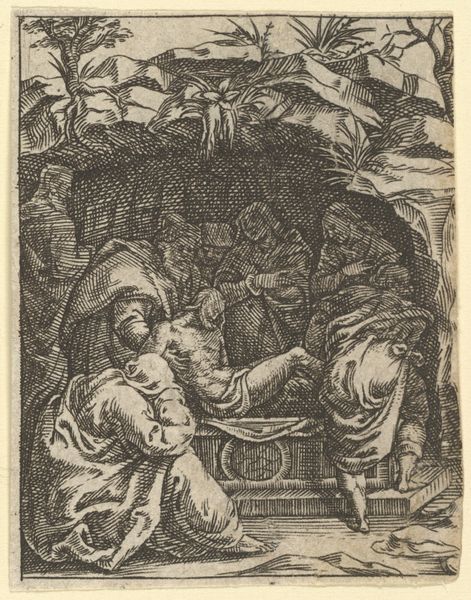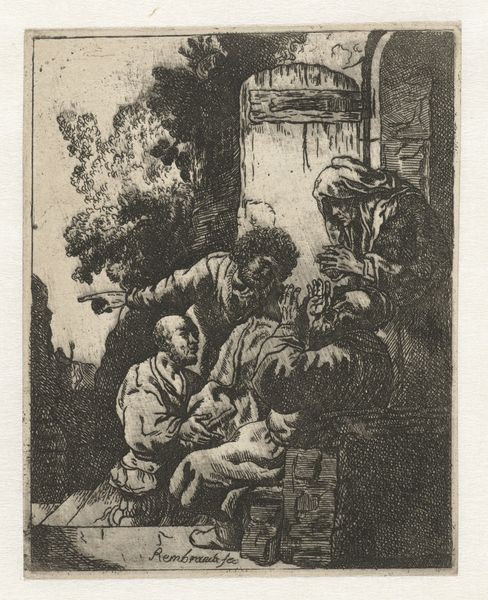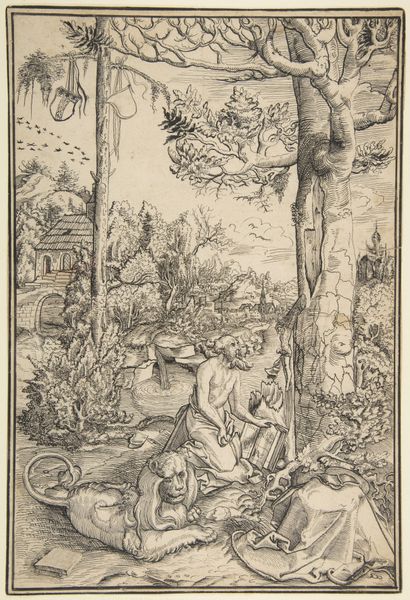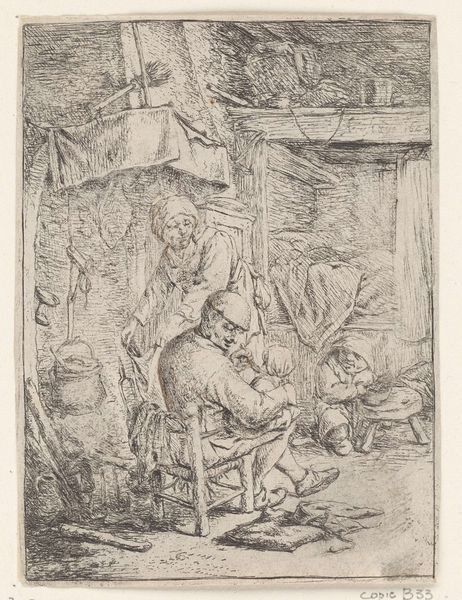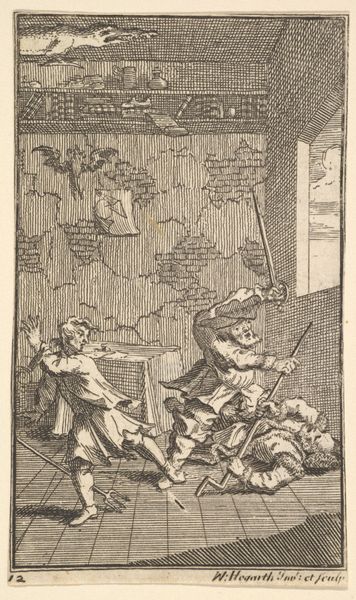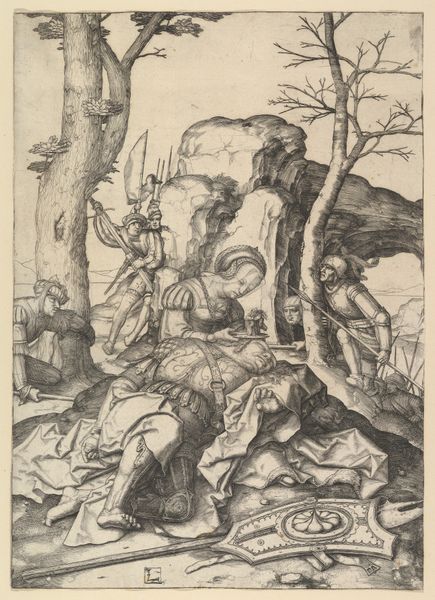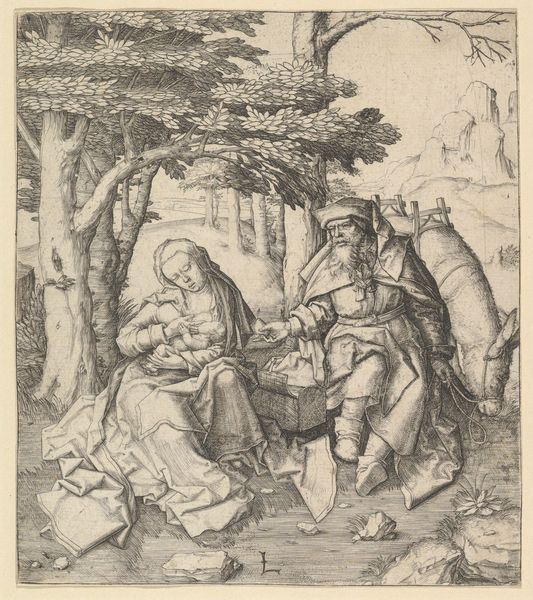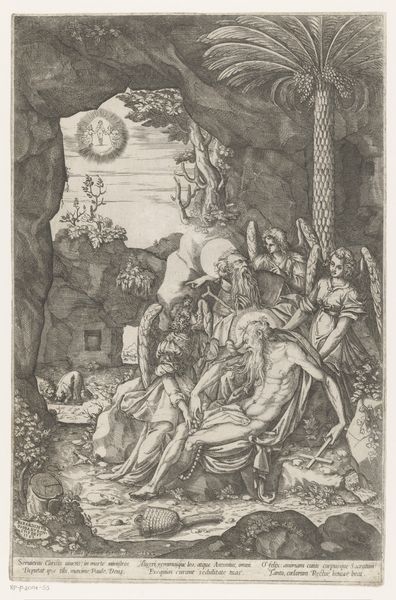
Death of St. Peter and St. Paul (Saint Pierre et Saint Paul dans le tombeau) 1600 - 1647
0:00
0:00
drawing, print, ink, pen
#
drawing
#
ink drawing
#
narrative-art
#
baroque
#
pen drawing
# print
#
figuration
#
ink
#
pen
#
history-painting
Dimensions: sheet: 7 15/16 x 5 11/16 in. (20.1 x 14.4 cm)
Copyright: Public Domain
Claude Vignon made this print of The Death of St. Peter and St. Paul in the 17th century, using etching. Here, a metal plate is coated with a waxy ground, and the artist draws into that surface with a sharp needle, exposing the metal. The plate is then submerged in acid, which bites into the exposed lines, creating grooves. What's fascinating about etching is that it democratized printmaking. It allowed for a more fluid, spontaneous line than the labor-intensive method of engraving. It also creates a softness, an almost dreamlike quality, seen here in the wispy angel overhead. This ethereal effect contrasts with the grounded reality of the saints in their tomb. The texture is also significant, look closely! The cross-hatching and varied line weights give depth and volume to the figures, while the overall looseness suggests a sense of immediacy. It’s as though Vignon wanted to capture not just the death of these important religious figures, but also the atmosphere surrounding their passing. This combination of technical process and expressive intent makes the print a powerful object. It blurs the line between reproductive print and original artistic statement.
Comments
No comments
Be the first to comment and join the conversation on the ultimate creative platform.


